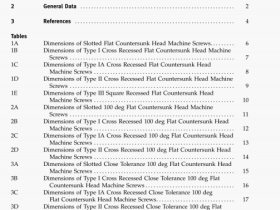ASME B73.2-2016 pdf download

ASME B73.2-2016 pdf download.Specification for Vertical In-Line Centrifugal Pumps for Chemical Process.
5.5.7 Fillets and Radii. All shaft shoulder fillets and radii shall be made as large as practical and finished to minimize stress risers.
5.6 Shaft Sealing
5.6.1 Design. The following are the three basic types of sealing covers:
(a) seal chamber
(b) universal cover
(c) packing box
The seal chamber and packing box are standard arrangements. The universal cover should be available as an option.
The seal chamber is designed to accommodate mechanical seals only and can be of several designs for various types of seals. The design includes a separate gland plate where required. The universal cover is designed to provide a standard dimensional platform for installation of cartridge-mounted mechanical seals. The packing box is designed for packing, but may be able to accommodate some sizes and types of mechanical seals without the advantages of the seal chamber or universal cover.
Details and tutorials on piping plans for mechanical seals can be found in API 682 (ISO 21049). Piping plan designations found in API 682 (i.e., Plan 11, Plan 53A. etc.) will be applied to ASME B73 pump applications. Details and designations on piping plans involving pump heating or cooling (i.e., bearing bracket cooling, heating and cooling jackets, etc.) can be found in API 610 (ISO 13709). The piping plan references from API 682 and API 610 shall only apply to the schematic and general description of the piping plan and not the specific design of components and hardware that may be contained in these Standards.
5.6.2 Seal Chamber. The seal chamber can be a cylindrical or a tapered design. The tapered bore seal chamber shall have a minimum of 4-deg taper open toward the pump impeller and shall include features that prevent the accumulation of solid particles in the chamber, unless otherwise specified. The seal chamber shall be designed to incorporate the details quantified in Figs. 2 and 3.
The secondary seal contact surface(s) shall not exceed a roughness of 63 in. (1.60 m) AA. Seal chamber bore corners and entry holes, such as those used for flushing or venting, shall be suitably chamfered or rounded to prevent damage to secondary seals at assembly.
The seal chamber shall include means of eliminating trapped air or gas. Vent connections, when required for this purpose, shall be located at the highest practical point; drains, when provided, shall be located at the lowest practical point. The location of piping connections to the seal chamber for other functions is optional. A primary flush plan is not recommended for single mechanical seals with tapered bore seal chambers and may impede their operation.
The size of all piping connections to the seal chamber
shall be V 4 in. NPT minimum, with V 2 in. NPT preferred.
5.6.2.1 Seal Chamber Runout. Mechanical seal performance is highly dependent on the runout conditions that exist at the mechanical seal chamber. Pumps shall be designed for compliance with the runout limits shown below. On smaller pump sizes, the actual measurement of these runout values may not be possible or practical on an assembled pump. Types of runout having significant effect on seal performance include the following:
(a) Seal Chamber Face Runout This is a measure of the perpendicularity of the seal chamber face with respect to the pump shaft. It is measured by mounting a dial indicator on the pump shaft and measuring FIM at the face of the seal chamber. The maximum allowable runout is 0.003 in. (0.08 mm) FIM (see Fig. 4).
(b) Seal Chamber Register Runout. Provisions shall be made for centering the gland with either an inside or outside diameter register. This register shall be concentric with the shaft or sleeve within 0.005 in. (0.13 mm) FIM (see Fig. 5).
5.6.3 Universal Cover. The universal cover shall be as indicated in Table 2. The runout requirements from para. 5.6.2.1 apply for face and register fits.
NOTE: The seal operating cavity is the responsibility of the mechanical seal supplier and should be incorporated into the seal gland.









